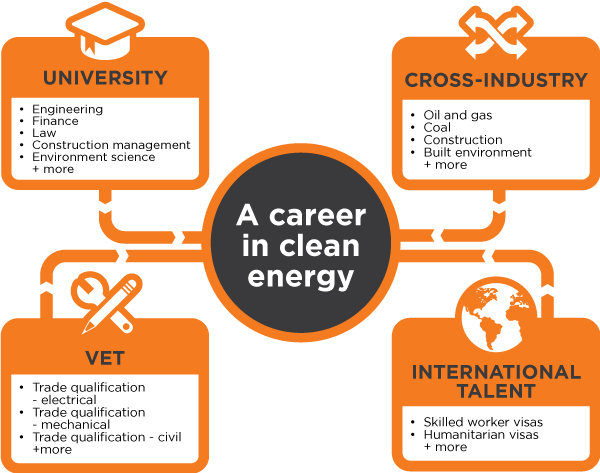This report explores the pathways into the clean energy workforce and provides a clear set of recommendations to address the barriers that limit the pool of skills and talent entering the industry.
This reflects a step change in the deployment of clean energy and will require significant growth in the clean energy workforce to ensure that a skilled talent pool is in place to deliver these projects in a sustainable, safe and efficient way.
Skilling the Energy Transition explores the current pathways into a clean energy career and provides a set of recommendations to address the barriers that are limiting the right skills and talent from entering the industry.
Work on these recommendations will require a concerted and coordinated effort, but successfully delivering them will create tens of thousands of quality jobs across Australia as we deploy the low-cost, clean and reliable power that is key to our long-term economic success.
Now is the time to take stock and put in place measures to ensure that people and jobs are a focus of Australia’s clean energy transition.Kane Thornton CEO, Clean Energy Council
The Australian clean energy industry currently employs around 30,000 people across large-scale renewable energy construction, operation and maintenance, and small-scale rooftop solar design and installation.
There are already shortages across many aspects of the existing workforce, particularly engineers and electricians. This risks inhibiting the enormous potential for job creation in clean energy over the coming decades.
A collaborative and coordinated approach is now required across governments, education and training bodies, unions, regional development bodies, and the clean energy industry to deliver a pathway into the clean energy workforce to ensure Australia has the skills and talent to become a clean energy superpower.

Interested in contributing to similar work?






